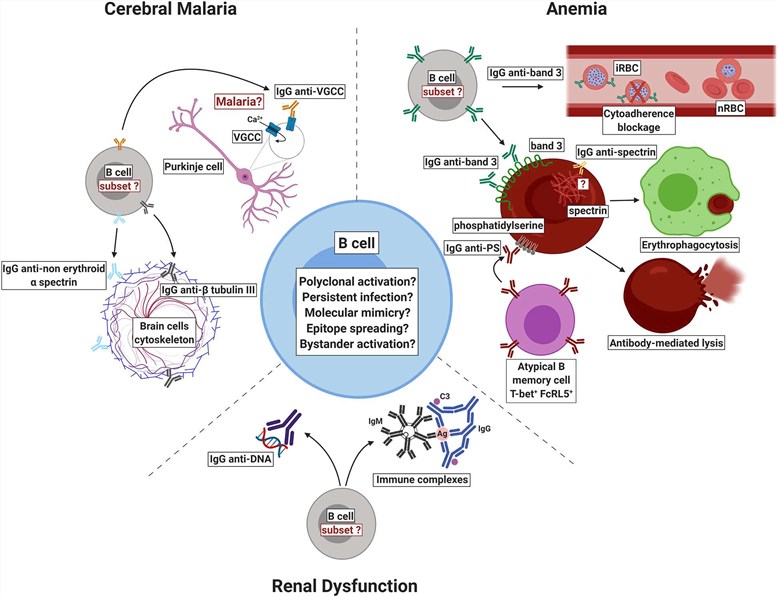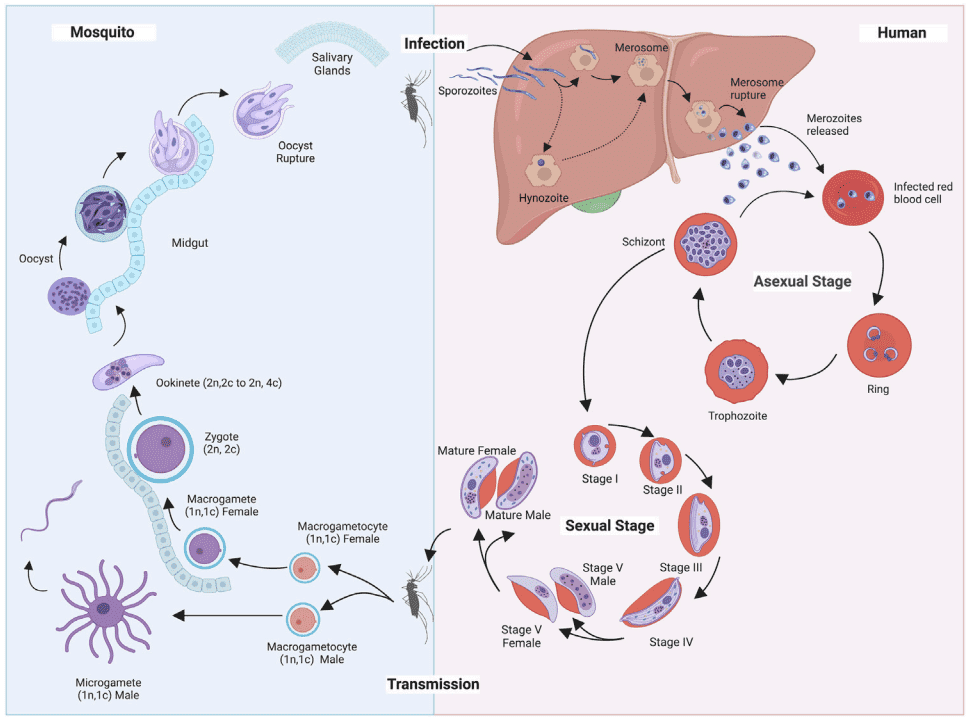NAA and Malaria
Natural autoantibodies (NAA), by binding to self-antigens, act as a filter preventing powerful immune response against self-triggered by self mimicking determinants on foreign invading microorganisms. Creative Biolabs is a USA world-leading NAA company that has been at the forefront of NAA research for several years.
Introduction of Malaria
Malaria, caused by protozoan parasites of the genus Plasmodium, is the leading cause of death and morbidity worldwide. Malaria parasites are eukaryotic single-celled microorganisms that belong to the genus Plasmodium. The association between various infections and the presence of autoantibodies has generated interest for some time. The presence of autoantibodies that recognize the host molecules has also been widely reported in malaria patients. West Africa being a malaria-endemic region, the presence of several autoantibodies in the healthy population may be due to previous malaria infection. The mechanisms by which autoimmune responses could be triggered during infection remain unclear but it is generally accepted that they may include molecular mimicry, bystander activation, epitope spreading, persistent infection, and B cells polyclonal activation.
 Fig.1 Schematic representation of self-reactive antibodies and their proposed role in the pathogenesis or protection against malaria. (Mourão, 2020)
Fig.1 Schematic representation of self-reactive antibodies and their proposed role in the pathogenesis or protection against malaria. (Mourão, 2020)
Malaria Develop Pathway
Plasmodium falciparum and Plasmodium vivax, to a much lesser extent, are the main causes of malaria-related illness and death. Mosquitoes inject parasites (sporozoites) into subcutaneous tissues, rarely directly into the blood; From there, the spores enter the liver. The co-receptor on the sporozoites that mediates invasion involves the thrombospondin domain on the circumsporozoite protein and the thrombospondin-associated adhesion protein (TRAP). These domains bind specifically to the heparin sulfate proteoglycan on hepatocytes, in the adjacent regions of the sinusoidal endothelium and Kupfer cells. Within the liver cell, each sporozoite develops into tens of thousands of merozoites, each of which can invade a red blood cell when released by the liver. The disease begins only when asexual parasites multiply in red blood cells. That's the only way to get sick.
 Fig.2 Plasmodium life cycle and pathogenesis of falciparum malaria.2
Fig.2 Plasmodium life cycle and pathogenesis of falciparum malaria.2
NAA Services for Malaria at Creative Biolabs
- NAA Services for Anti-fluorescent anti-nuclear Antibodies (FANA)
- NAA Services for Anti-smooth Muscle Antibodies (SMA)
- NAA Services for Anti-Nuclear Antibody (ANA)
- NAA Services for Anti-Double-Stranded DNA (dsDNA)
- NAA Services for Rheumatoid Factor (RF)
- NAA Services for Anti-mitochondrial Antibody (AMA)
Malaria Related Products at Creative Biolabs
| Target | Product Name | Cat. No. |
|---|---|---|
| PR3 autoantibody | Human PR3 Autoantibody (IgG) ELISA kit | NAK-026 |
| ANCA-C PR3 autoantibody | Human ANCA-C PR3 Autoantibody (IgG) ELISA kit | NAK-022 |
| Extractable nuclear antigens (ENA) autoantibody | Human Extractable nuclear antigens (ENA) Autoantibody (IgG) ELISA kit | NAK-038 |
| dsDNA autoantibody | Human dsDNA Autoantibody (IgG&IgM&IgA) ELISA kit | NAK-036 |
| dsDNA autoantibody | Human dsDNA Autoantibody (IgG) ELISA kit | NAK-035 |
| AMA-M2 autoantibody | Human AMA-M2 Autoantibody (IgG) ELISA kit | NAK-013 |
The NAAs are part of a physiologic mechanism for cleansing the organism of self and non-self products in which classical antibodies serve to clear the body of foreign invading agents, while natural autoantibodies rid the organism of its own catabolic products. Creative Biolabs is a premier NAA services contract provider in the USA, we want to contribute to better health in the world by developing and offering proven and user-friendly NAA services and products. If you are interested in our services and products, please contact us for more information.
References
- Mourão, Luiza Carvalho, Gustavo Pereira Cardoso-Oliveira, and Érika Martins Braga. "Autoantibodies and malaria: where we stand? Insights into pathogenesis and protection." Frontiers in Cellular and Infection Microbiology 10 (2020): 262.
- Chahine, Zeinab, and Karine G. Le Roch. "Decrypting the complexity of the human malaria parasite biology through systems biology approaches." Frontiers in systems biology 2 (2022): 940321.

